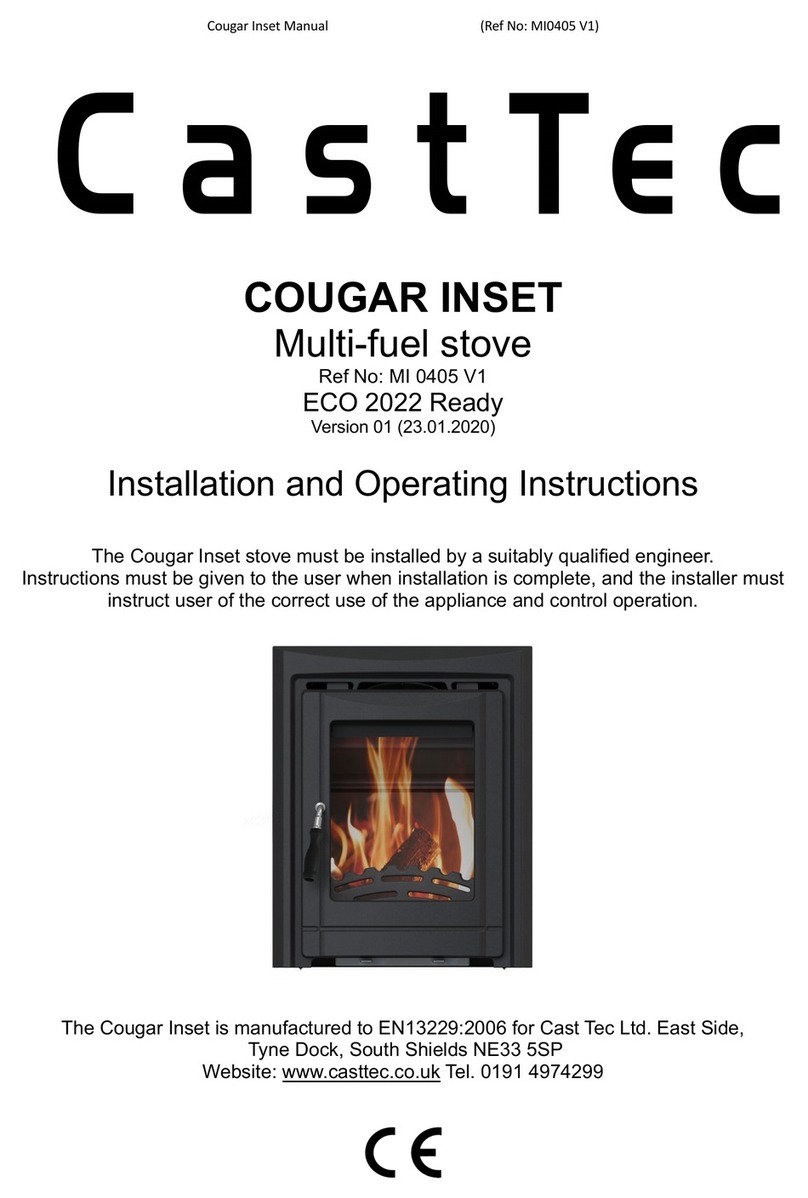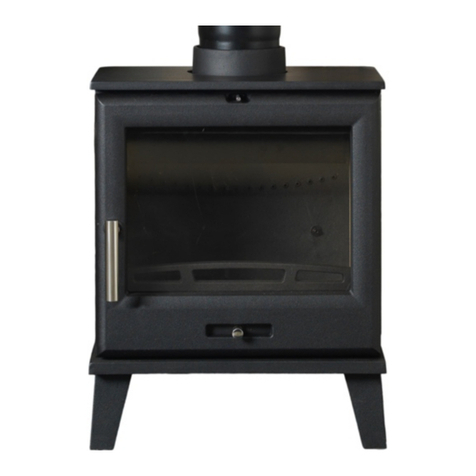NOR INS REV 5 Nov 2017
!
Glass
If the glass is blackened by soot it can be easily cleaned using one of the many
specialist stove glass cleaning products available. Glass is not covered by the
manufacturer’s warranty.
Surface
The high temperature paint finish should require no further treatment. Any
damage or wear on small areas of the paint finish may be remedied using our
high temperature aerosol paints. Please read the instructions on the aerosol
carefully before applying.
Installation
Building Regulations Installation of your Norvik stove must comply with all local
building regulations, including those referring to national and European
standards. We advise prior to any installation a full site survey is conducted by
an installation engineer recognised within an industry standard such as NACS
or HETAS to check the suitability of your chimney and appliance. Document J
of the building regulations contains further information regarding the installation
of solid fuel appliances and can be viewed at
http://www.planningportal.gov.uk/uploads/br/BR_PDF_ADJ_2010.pdf
Ventilation
The appliance may require additional air ventilation if required. Any air inlet
grilles should be positioned so that they are not liable to blockage. An air
extraction device shall not be used in the same room as the appliance unless
adequate additional ventilation is provided. Other heating appliances requiring
air for combustion shall not be used in the same room as the appliance unless
adequate additional ventilation is provided. Stoves need a supply of air for
combustion, and to evacuate the flue gases otherwise they will not work.
Without an air supply the stove will not light and smoke is likely to pour out into
the house. The smoke will not be able to be drawn up the chimney as this
requires air movement up through the chimney which is not possible if there is
no source of air. If your stove smokes or does not burn very keenly, but this
improves when you open a window then this is a sign that you need to install
some ventilation. We recommend you discuss your ventilation requirements
with your local Norvik Stove authorised retailer/installer. Any airbricks or grilles
fitted should be positioned so that they are not liable to blockage. If other
appliances requiring ventilation operate within the vicinity of the stove there
must be adequate ventilation provided for both appliances running
simultaneously. NOTE Extractor fans when operating in the same room or
space as the stove may cause problems.
Load-bearing capacity of the floor
Before installing the stove, you must ensure that the load-bearing capacity of
the floor can withstand the weight of the stove and any flue pipes and
connections. The weight of the stove is 80Kgs.































